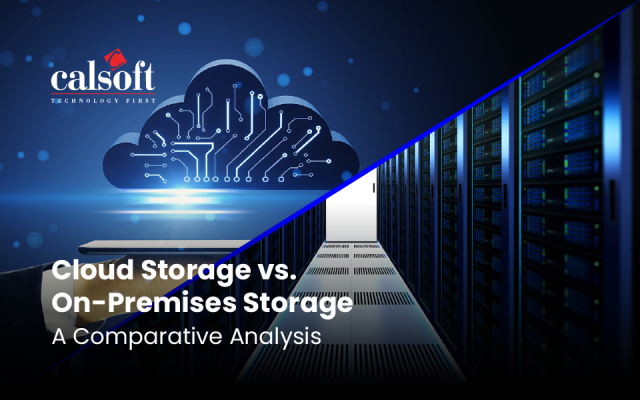Does this sound familiar – astronomical data storage costs, ever-increasing data sprawl, flawed and flimsy disaster recovery options, little to no assurance of data availability, and definitely questionable and probably vulnerable data security?
As nightmarish as this sounds, this hellscape was the reality for most businesses before the proliferation of cloud-based storage. In fact, this was the norm, because storage was critical to business and there wasn’t a drastically different, more efficient way to circumvent it just yet. All of this changed with the advent of modern cloud storage. Soon, enterprises revolutionized storage with storage as a service (STaaS).
Take Evernote’s story. Evernote, a massively popular collaborative, cross-platform task management application had maintained its own servers since the beginning. However, with increasing popularity and high adoption rates, Evernote started running out of storage space and was limited by its infrastructure. Traditional storage was inflexible, unscalable, and costly.
In 2016, Evernote successfully made the shift from bare metal to STaaS and migrated five billion notes and five billion attachments in only 70 days. As a result, Evernote benefitted from unfettered storage capabilities, which guaranteed high speeds, flexibility, reliability, security, and room for disaster recovery planning, all with minimal service disruption.
Spotify, Etsy, Shopify, and many more businesses, big and small, have leveraged STaaS to conquer storage issues once for all.
These incredible success stories and the current technological and corporate landscape act as purveyors of change leading a radical evolution in the way businesses store and access data. This is evidenced by numbers from the industry that reveal a massive uptick in the adoption and implementation of STaaS.
What data says
2019’s State of the Cloud survey reported that out of 800 companies participating in the survey, 94% were leveraging cloud storage. Most businesses are still only embarking on their cloud journey, and have much ground to cover, having migrated roughly a quarter of their applications to the cloud. Figuring out unique security, compliance, and geographic implications is a tough nut to crack, but the right storage partners will handhold you through it, to make it work for you. Despite these presumable obstacles, STaaS implementation numbers will surge: Research and analysis firm Gartner predicts, about 50% of companies using the Cloud partially today will adopt an all-cloud infrastructure by the end of 2021.
Let’s look at the benefits businesses from the statistics mentioned above experienced after STaaS adoption.
Benefits of Storage as a Service – STaaS
Here is why STaaS works for everyone.
- Significantly reduced storage costs: The most popular benefit of STaaS is its cost. Not only does it allow you the benefit of paying for only as many resources as you utilize, but it also saves personnel, hardware, and office storage space expenses.
- Automated, speedy, and safe disaster recovery: Disaster recovery options with STaaS are drastically better than local and bare metal storage. Multiple copies of data are stored across distinct locations for virtually zero downtime and more efficient disaster recovery measures.
- More scalability: You pay for only what you utilize. This allows the flexibility and scalability businesses these days need. Your storage scales as your business does.
- Easy syncing: STaaS enables automatic syncing. Your files are auto-updated across multiple platforms and devices.
- Enhanced security: With a dedicated vendor tending to storage needs, data security is most likely a shoo-in Your data is usually securely encrypted during transmission as well as at rest. Additionally, data is protected against potential physical risks as well.
- Better data accessibility: STaaS makes your data universally available and accessible. Users can access data from any device with the correct credentials and authorization permissions – smartphones, laptops, desktops, mainframes, and more.
- Seamless collaboration and sharing: Storage as a service enables multi-user access and the ability to share data with just a few clicks.
- Edge enablement: Edge computing is the undeniable future of customer-focused applications. STaaS drives Edge and enables AI and 5G which have the potential to accelerate data access and power smart applications.
Learn more about STaas for Edge and cloud computing in our expert-led free webinar
Given the apparent advantages, STaaS adoption numbers are only bound to rise.
What does the future of STaaS look like?
The future of STaaS is in flux. Many trends are struggling to dominate the StaaS market, but only some will win. Let us look at some of the trends that might just change the future of the STaaS industry.
Multi-cloud strategies
By making data accessible to several compute environments, companies can access or segregate data as necessary. Companies can also invest in tools to manage hybrid workloads, allowing for greater flexibility in data storage.
AI/ML investment
Artificial Intelligence and Machine Learning can help save time, money, and effort for any organization, as they will be able to automate substantial portions of their data analysis and structuring.
Hyper-converged storage
Since Storage as a Service is becoming increasingly tightly connected to edge computing, hyper-converged storage is becoming popular. In a hyper-converged storage system, storage is bundled with computing, making both storage and calculation times faster. Hyper-converged storage can make the data storage process streamlined and simple for all kinds of IT operations.
Flash storage
Data reading and writing speeds matter a lot, especially when it comes to business decisions. Consequently, a search for faster and better storage tech is on the horizon. The newest entrant to the marketplace is Non-Volatile Memory Express (NVMe), capable of handling large volumes of data and performing quick calculations. This kind of memory, called flash storage, is steadily growing more popular thanks to its usefulness.
Now that you have armed yourself with critical information about STaaS that could influence your decision-making positively, let us discuss getting started with STaaS.
Getting started with STaaS
While STaaS can work wonders for you, for it to work, you need to have the right people at the helm of the operation, guiding you – experts who understand storage and whose expertise and experience you can rely on. The process is complex and relatively new. You should hire experts that can be an extension to your team and help you experience the amazing benefits that STaaS brings.
Calsoft has been a pioneer in the storage and data center domains. Our experts have assisted multiple customers all over the globe in improving their storage practices and turning their businesses around.
Explore our expertise and contact us for free a quick expert consultation and get started with STaaS easily.






